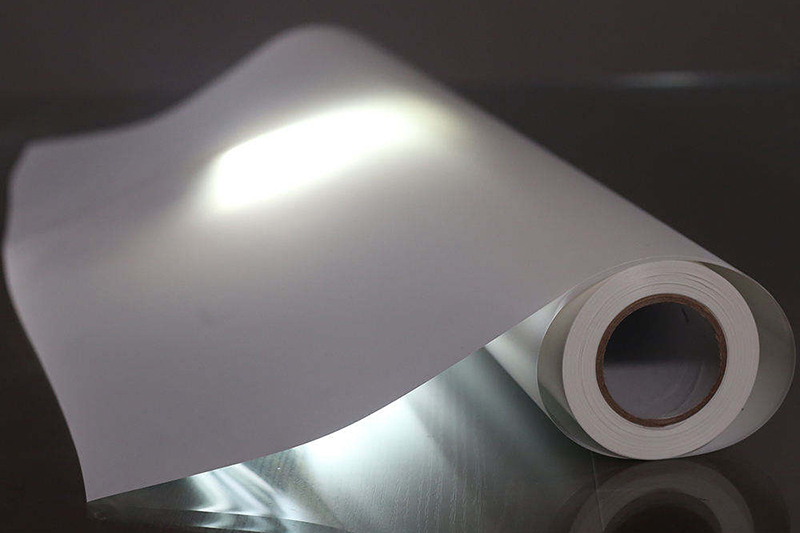PET backlit film has become a popular choice for a wide range of applications, from signage and displays to architectural lighting and interior design. Its versatility, affordability, and aesthetic appeal make it a compelling option for both indoor and outdoor use. However, a crucial factor influencing the suitability of PET backlit film for a specific project is its durability and longevity. This article delves into the factors that contribute to the durability and longevity of PET backlit film, exploring its resistance to environmental factors, mechanical stress, and degradation over time.

Understanding PET Backlit Film
PET backlit film is a type of polyester film that is specifically designed to be illuminated from behind. It is typically composed of a transparent or translucent PET base film coated with a diffuser layer to evenly distribute light. This diffuser layer can be made from various materials, such as PVC, acrylic, or specialized optical films. The combination of the PET base film and diffuser layer creates a material that is both strong and light-transmitting, making it ideal for backlit applications.
Factors Affecting Durability and Longevity
Several factors can influence the durability and longevity of PET backlit film:
UV Resistance: Exposure to ultraviolet (UV) radiation from sunlight can cause PET backlit film to degrade over time, leading to yellowing, cracking, and loss of transparency. To combat this, many PET backlit films are treated with UV inhibitors during the manufacturing process. These inhibitors absorb UV radiation, preventing it from damaging the film.
Temperature Resistance: Extreme temperatures can also affect the performance of PET backlit film. High temperatures can cause the film to warp or shrink, while low temperatures can make it brittle and prone to cracking. Choosing a PET backlit film with a wide operating temperature range is essential for applications exposed to fluctuating temperatures.
Moisture Resistance: Moisture can penetrate PET backlit film, leading to delamination, clouding, and mold growth. Films with a moisture barrier coating or those designed for outdoor use are more resistant to moisture damage.
Mechanical Strength: PET backlit film is generally quite strong and resistant to tearing and abrasion. However, it can still be susceptible to damage from sharp objects or excessive force. Choosing a film with a higher tensile strength and tear resistance can improve its durability in demanding applications.
Chemical Resistance: Exposure to certain chemicals, such as solvents and cleaning agents, can damage PET backlit film. Selecting a film that is resistant to the specific chemicals it may encounter is crucial for maintaining its longevity.
Enhancing Durability and Longevity
Several strategies can be employed to enhance the durability and longevity of PET backlit film:
Proper Installation: Ensuring proper installation techniques, such as using appropriate adhesives and avoiding wrinkles or creases, can significantly extend the lifespan of the film.
Regular Cleaning: Regularly cleaning the film with a soft cloth and mild detergent can remove dirt, dust, and other contaminants that can degrade the material over time.
Protective Coatings: Applying a protective coating, such as a UV-resistant varnish or anti-graffiti film, can provide an additional layer of protection against environmental factors and vandalism.
Choosing High-Quality Materials: Opting for PET backlit film from reputable manufacturers that use high-quality materials and manufacturing processes can ensure a longer lifespan and better performance.
The durability and longevity of PET backlit film are crucial considerations for any project. By understanding the factors that can affect its performance and implementing strategies to enhance its resistance to environmental factors and mechanical stress, designers and installers can ensure that PET backlit film applications remain vibrant and functional for years to come. Choosing the right PET backlit film for a specific application, considering its intended use, environmental conditions, and expected lifespan, is essential for achieving optimal results.
